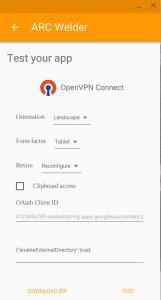Below are the tips and tricks I’ve learned in my quest to get all my family home movies working properly in Plex. I ended up having to re-encode most of them to have a proper codec.
ffmpeg is what I ended up using. Thanks to here and here I found a quality setting that I liked: x264 video with crf of 18 and veryslow encoder preset, AAC audio at 192kbps, mp4 container.
ffmpeg -i <file> -acodec libfdk_aac -b:a 192k -ac 2 -vcodec libx264 -crf 18 -preset veryslow <filename>.mp4
I tried to use exiftools to add metadata to the file but Plex wouldn’t read it. Instead I discovered you can use ffmpeg to encode things like title and date taken directly into the file. The syntax for ffmpeg is
-metadata "key=value"
The metadata values I ended up using were:
- date – Plex looks at this
- Title – what’s displayed in plex
- comment – not seen by plex but handy to know about anyway
Encoding
My first pass at encoding combined find with ffmpeg to re-encode all my avi files. I used this command:
find . -name *.avi -exec ffmpeg -i {} -acodec libfdk_aac -b:a 192k -ac 2 -vcodec libx264 -crf 18 -preset veryslow {}.mp4 \;
Interrupted
I bit off more than I could chew with the above command. I had to kill the process because it was chewing up too much CPU. There are two ways to figure out which file ffmpeg is on:
ps aux|grep ffmpeg
will list the file that ffmpeg is currently working on. Take note of this because you’ll want to remove it so ffmpeg will re-encode it.
You can also run this command to see the last 10 most recently modified files, taken from here:
find $1 -type f -exec stat --format '%Y :%y %n' "{}" \; | sort -nr | cut -d: -f2- | head
Resume
Use the above command to remove what ffmpeg was working on when killed. Append -n to tell ffmpeg to exit and not overwrite existing files
find . -name *.avi -exec ffmpeg -n -i {} -acodec libfdk_aac -b:a 192k -ac 2 -vcodec libx264 -crf 18 -preset veryslow {}.mp4 \;
Cleanup
The command above gave me a bunch of .avi.mp4 files. To clean them up to just be .mp4 files combine find with some bash-fu (thanks to this site for the info)
find . -name “*.avi.mp4” -exec sh -c ‘mv “$1” “${1%.avi.mp4}.mp4″‘ _ {} \;
Finally, remove original .avi files:
find . -name "*.avi" -exec rm {} \;
Update 2/3/2016: Added a verification step.
Verification
Well, it looks like the conversion I did was not without problems. I only detected them when I tried to change the audio codec I used. You can use ffmpeg to analyze your file to see if there are any errors with it. I learned this thanks to this thread.
The command is:
ffmpeg -v error -i <file to check> -f null -
This will have ffmpeg go through each frame and log and tell you any errors it finds. You can have it dump them to a logfile instead by redirecting the output like so:
ffmpeg -v error -i <file to scan> -f null - >error.log 2>&1
What if you want to check the integrity of multiple files? Use find:
find . -type f -exec sh -c 'ffmpeg -v error -i "{}" -f null - > "{}".log 2>&1' \;
The above command searches for any file in the current directory and subdirectories, uses ffmpeg to analyze the file, and will output what it finds to a log file of the same name as the file that was analyzed. If nothing was found, a 0 byte file was created. You can use find to remove all 0 byte files so all that’s left are logs of files with errors:
find . -type f -size 0 -exec rm {} \;
You can open each .log file to see what was wrong, or do what I did and see that the presence of the log file at all means that the file needs to be re-encoded from source.
Checking the integrity of the generated files themselves made me realize I had to re-encode part of my home movie library. After re-encoding, there were no more errors. Peace of mind. Hooray!
